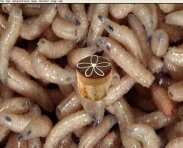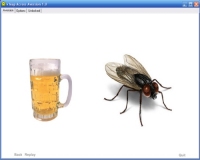Addiction and habit treatment: software training and usage notes
With issues including chemical dependency it is assumed that the patient will have undergone whatever level of medical "detox" treatment is required in advance of psychological therapy commencing. Some or all of the following should be considered for addictions and habitual behaviours (here's an example treatment protocol in this case to work with coca-cola 'addiction'):
Urge ScalingYou should rank the urge to consume / use etc on a regular basis throughout the treatment process to determine which approaches seem to be effective for the individual that you are working with. Typically this will be on a familiar scale of 0 to 10, with 0 being no desire.
EMDR via systematic trigger desensitisationEMDR can also be used to work on imaginal reactions to trigger situations eg walking past an off-licence / liquor store or seeing a TV advert, or seeing drug use in a movie etc etc. EMDR may also be applied to underlying belief systems. (See also Popky's EMDR trigger desensitisation protocol for addictions).
EMDR via EMDR Pro - Aversion
Note that aversion will be ineffective for some people, in which case abandon simple aversion as an approach as early as possible. An alternative might be to use negative consequences as a form of aversive stimuli. This too will be ineffective for some patients - especially where motivation in insufficient or external. If limiting beliefs are present such as 'I cannot live without xyz' then target using the belief change part of the standard EMDR protocol.
Map Across Aversion
Within the Map Across range there are 5 products. Four deal with specific issues using fixed images and sounds. The other is designed so that the user can select their own images and sounds. A small library of aversive images and audio / problem images is provided. EMDR Pro and Toolkit users can also use any of the images in the shared media library. Therapists - how to use the Map Across Aversion rangeYou should view the software as a visual training aid. The aversive stimuli provided may or may not match with the stimuli that disgusts your patient. If this is the case you should describe additional stimuli verbally and amplify the level of disgust as much as possible. Remember, you patient needs to want to be disgusted in for any psychological aversive process to work. Once you have looped the process several times using the software try and transfer the process to the patients imagination so they can replicate the process when back at home without needing the software. Patients / Clients - how to use the Map Across Aversion rangeFollow the on-screen instructions. Focus on each image and notice how you feel. Make the feelings that you feel when looking at the aversive image as strong as possible - amplify them in your mind and if necessary imagine other things that disgust you at the same time. Use the software as a visual aid to guide you through the process of changing how you feel about the overly desired thing. Only you can change how you feel - so make sure that you initially use the software when you are strongly motivated to want to be disgusted by the desired stimuli. You need to make the feelings of disgust stronger than the feelings of desire. The software (or your therapist) can only take you part of the way there, the rest is up to you. Having used the software several times if required you can transfer the process to the your imagination with your eyes closed. You should be able to replicate the Map Across aversion process in your mind so you can use the technique when the need arises.
FloodingFlooding can be employed as an aversive tool by merging trigger / desired stimuli with aversive stimuli. The "Virtual Pôrnography Aversion" software utility is an example of this. The same effect could be achieved using the "Flooder" software utility.
Other Aversive MethodsInstant Audio can be used to play aversive sounds as the therapist is describing aversive stimuli eg in vivo using hypnosis.
EMDR via EMDR Pro - Trigger DesensitisationAt an early stage identify the triggers that are relevant to your patient at that time and generate a hierarchy. Collect images that match some or all of the categories within the hierarchy. Don't worry if you can't find specific images to support all of the categories - use the imagination to fill in the gaps. (We all have the ability to imagine, having an image present just makes the process vastly easier!) When going through the trigger desensitisation process use beeps, with relaxing background audio initially (with Panning Tracking enabled if possible) and use the Tactile Units if available. Work your way through the hierarchy as per systematic desensitisation (see phobias / fears). Consider introducing strong positive resources eg via anchoring throughout the process. If relaxation does not collapse the desire associated with the trigger then use aversive background audio instead. If the level of desire still does not reduce then boost motivation first and emphasise the positive benefits of the change, and / or remind the person of what they will lose as a result of continuing their behaviour.
Relaxation and stress / anxiety managementAt an early stage teach self management of stress and anxiety. (See stress / anxiety management notes). Strongly task your patient to use the techniques many times per day. A formal contract for action many be advantageous in some cases. Positive visualisation and rehearsal of using coping strategies should be part of that process.
EMDR via EMDR Pro - Motivation / Resource buildingAt the end of every session there should be a strongly motivational aspect to direct the change process towards a positive goal and to build resources. EMDR can be used as part of the process of amplifying positive resource states such as confidence and urge control. EMDR research papers: SwishSwish can be used as part of the process of installing a strong positive motivational goal to move towards. The goal needs to be mouth-watering and reinforced on a regular basis during sessions and by the patient when at home. You need to note down benefits at an early stage in order to do so.
Abstinence V ControlThe Abstinence V Control issue should be considered at an early stage. A period of abstinence is advantageous even if a control route is subsequently selected. In the case of hard-drugs the only ethical route is abstinence. In all other cases the choice should be made by the patient, noting that the choice does not need to made from the outset - consider waiting until the close of an initial period of abstinence. © Bill Frost 2006-2021
Home
|
Shop
|
Contact us
|
Therapists Toolkit
|
EMDR Software
|
EMDR Lite Software
|
Phobia Treatment Software
|
Aversion Software
|
TFT Software
|
Flooding Desensitisation / Implosion Therapy Software
|
Emetophobia Desensitization Multimedia Software
|
Desensitisation Therapy Multimedia
|
NLP Swish technique mood / state change software
|
Bilateral Audio Software
|
Drug / alcohol / food (cake / chocolate) aversion software
|
CBT / CBH Tasking Software
|
Directory / Resources |
Sitemap
EMDR, Hypnotherapy and Hypnosis in High Wycombe and Central London |
() |
Psychotherapy, hypnotherapy and hypnosis in High Wycombe
Last Updated 20 April 2024 © www.neuroinnovations.com 1998-2023
|
 EMDR Pro is a highly flexible tool and can be used in the first instance to install aversive responses. If using aversion note that the stimuli needs to be specific to the individual - that which disgusts you may have no effect on your patient. You also need to be very direct, very explicit and you need to engage as many modalities as possible. This may include presenting aversive background images in combination with an aversive audio file. Throughout the process you need to provide a strongly aversive narrative to amplify the experience.
EMDR Pro is a highly flexible tool and can be used in the first instance to install aversive responses. If using aversion note that the stimuli needs to be specific to the individual - that which disgusts you may have no effect on your patient. You also need to be very direct, very explicit and you need to engage as many modalities as possible. This may include presenting aversive background images in combination with an aversive audio file. Throughout the process you need to provide a strongly aversive narrative to amplify the experience.
 Map Across Aversion can be used as an alternative to EMDR or within an essentially EMDR based process. Again, you need to provide a strong narrative to amplify the experience.
Map Across Aversion can be used as an alternative to EMDR or within an essentially EMDR based process. Again, you need to provide a strong narrative to amplify the experience.